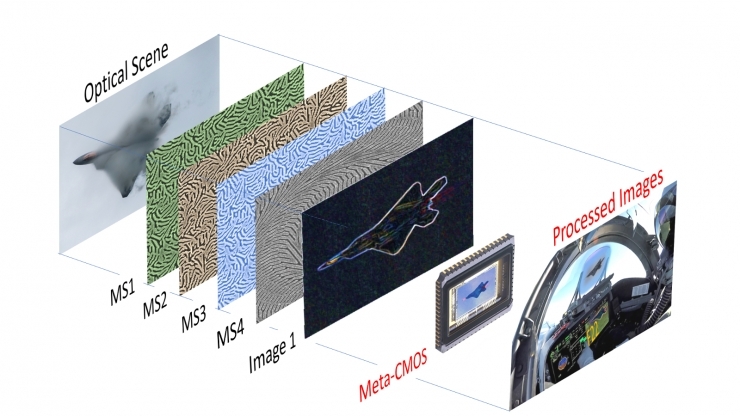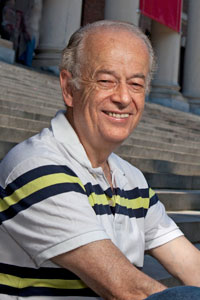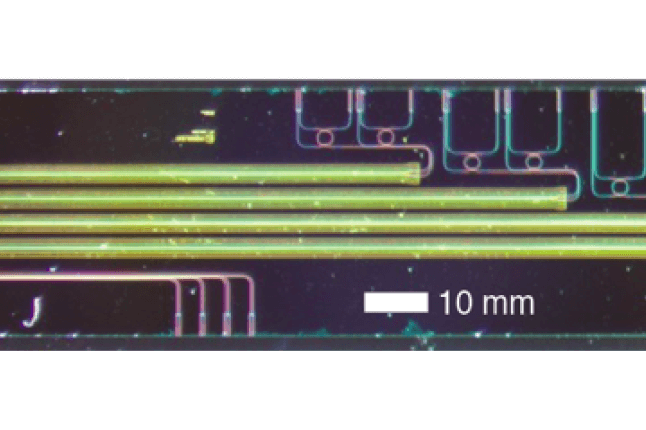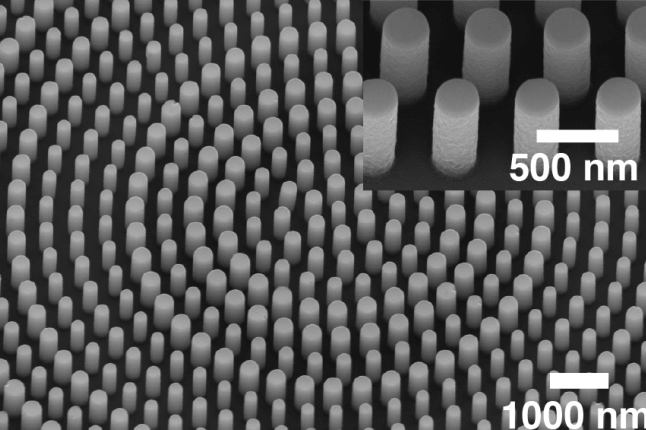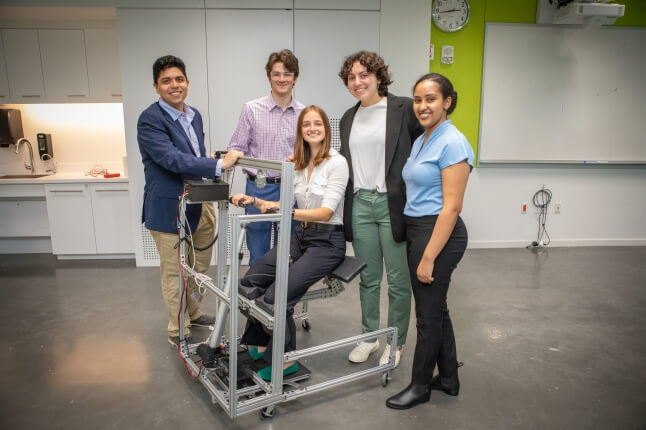News
Federico Capasso, the Robert L. Wallace Professor of Applied Physics and Vinton Hayes Senior Research Fellow in Electrical Engineering, is part of team of researchers creating a “super camera” that can capture and process a wide range of light’s properties.
A new $7.5 million Department of Defense grant is seeking to build a ‘super camera’ that combines multiple metasurfaces that together can extract almost every bit of information that light has to offer. (Image credit: Mark Brongersma, Stanford University)
The team, led by engineers from Duke University, has been awarded a $7.5 million grant through Department of Defense’s Multidisciplinary University Research Initiative (MURI) competition.
“Our MURI team vision is cameras sensing all properties of light, not just intensity and color but alsodepth, polarization, the three electromagnetic field components, correlations and so on, all at once,” said Capasso.
Current optical sensing cameras can only focus on detecting the intensity and color of light, and the computational processing power needed often requires bulky and costly setups. Newer systems are crucial to a range of Department of Defense missions requiring ultra-small size, weight, and power.
The imaging aspect of the advanced technology will be based on metasurfaces - nanoscale devices that interact with light due to the materials’ structure rather than their chemistry. Capasso has done pioneering work on this front, from polarization manipulation to inventing flat optics based on metasurfaces, which has revolutionized the design of lenses.
To expedite processing, researchers plan to implement designs that process locally rather storing data in the cloud, a concept known as edge computing, and hardware acceleration, the idea of incorporating some of the processing directly into the hardware architecture.
This project is led by Maiken Mikkelsen, the James N. and Elizabeth H. Barton Associate Professor of Electrical and Computer Engineering at Duke. Additional collaborators come from the California Institute of Technology, City University of New York, Stanford University, and University of Pennsylvania.
Mikkelsen, Capasso, and the rest of the team will work over the course of five years to create an imaging system that can handle both sensing and processing, while simultaneously streamlining its size and weight.
The project is a culmination of groundbreaking research at the intersection of nanoscience, photonics, and information science that will lay the foundation for advanced imaging in an on-chip platform.
Topics: Optics / Photonics
Cutting-edge science delivered direct to your inbox.
Join the Harvard SEAS mailing list.
Scientist Profiles
Federico Capasso
Robert L. Wallace Professor of Applied Physics and Vinton Hayes Senior Research Fellow in Electrical Engineering
